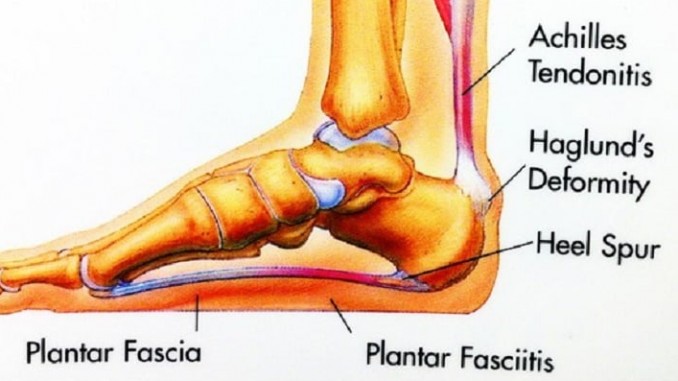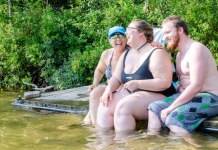
You just got out of bed, took your first step and ouch! You feel a sharp, stinging pain on your heel. And after taking a few more steps, the pain goes away, much to your surprise. What you’re suffering from is known as plantar fasciitis, a disorder that often results from excessive strain on one’s feet. As you try to find a viable solution, you may come across Rolfing, a healing technique known for its effectiveness in treating plantar fasciitis.
What is Rolfing?
Rolfing is a bodywork training technique aimed at restructuring muscles and the connective tissue of the body (also known as fascia). The practice is named after its founder, Dr. Ida Rolf, an American Biochemist who extensively studied alternative healing methods in the 1920s. She (Dr Rolf) proposed a theory that basic imbalances in one’s posture and alignment are the primary causes of aches and pain. These two factors are usually reinforced by gravity, as well as learned responses among fascia and muscles. Rolfing aims at correcting these imbalances and minimizing the compensations and stresses that cause pain.
Unlike other holistic practices that deal with bones and muscles, Rolfing focuses on manipulating fascia, which can be quite the stubborn material. This might explain why most people see it as an aggressive technique, even painful at times. Typically, practitioners (known as Rolfers) will gouge and knuckle various elements of the body into submission. For this reason, one needs enough fortitude if they’re going to relax and endure the hour-long sessions.
How Good is Rolfing for Plantar Fasciitis?
Located just beneath the skin on the sole of the foot, the plantar fascia is a layer of fibrous tissue that absorbs shock each time one takes a step. Although plantar fasciitis is commonly associated with impact sports, individuals with poor foot biomechanics can also fall victim. The condition results from excessive tightening of posterior leg muscles, and is characterized by micro-tears that cause dysfunction and pain. Treating this problem requires the reestablishment of strength, alignment and flexibility of the soft tissues structures, which is why Rolfing is a great remedy.
Another reason why one would choose the technique for their treatment is because it recognizes the interrelated nature of the body. As such, Rolfers will usually work on both the
plantar fascia as well as the surrounding area. This involves loosening the superficial fascia, working on the deeper areas, enhancing support in feet and legs, and helping patients make better use of their improved movement in their daily routines.
Effective treatment requires at least 10 sessions of therapy. During the series, chronic tensions are minimized, giving the entire body the opportunity to switch to an efficient movement pattern. Soft-tissue contractions are addressed with the aim of equipping legs and feet with the ability of taking the weight of the entire body. Patients also learn how to transfer this weight from one foot to the other with every step they take. Additionally, tight muscles are eased to enhance proper biomechanics, which has the effect of healing the micro tears present in the inflamed fascia. With proper treatment, it’s safe to say that plantar fasciitis can become a distant memory in most cases.
But Isn’t This What Massage Does?
While deep-tissue massage is aimed at relieving muscle discomfort and promoting relaxation, Rolfing focuses on a more-holistic approach that works on the entire body. Rolfers will thus strive to restore balance throughout the entire structure, as opposed to focusing on areas where tension is present. So besides reducing pain and promoting recovery, the practice can help prevent any secondary issues that could develop from the initial problem.
Patients can further tell the difference between massage and Rolfing due to the latter’s use of firm, sustained pressure. This is usually done to coax the fascia into softening and lengthening. More importantly, Rolfing often results in significant, long-lasting changes, while massages will only eliminate symptoms temporarily. Other significant benefits of the practice include:
–Better posture: After completing the 10-session series, your body will be able to adjust imbalances in the myofascial tissue much easier. This is mainly due to your enhanced ability to make use of gravity — your body learns how to use gravity to align itself, as opposed to being pulled down.
–Improved balance and stability: Most patients describe having an experience of feeling lighter overall, thanks to the enhanced posture. Furthermore, your feet will be able to make better contact with the ground in order to enhance stability.
–Better mobility: After Rolfing, muscle layers and fascia will be able to glide more freely on each other. This has the effect of promoting flexibility and range of motion throughout the body.
What About Shoes?
Sometimes choosing the right pair of shoes for plantar fasciitis can help as well. Click the link to find some suggestions on the best shoes for plantar fasciitis.
What are the Possible Side Effects?
Rolfing is usually believed to be safe for most individuals. That said, one needs to ensure that their condition isn’t caused by an underlying health issue. You might also want to clear the matter with your doctor before you can attend a Rolfing session. The technique is not recommended for expectant ladies, and anyone else who suffers from another illness besides plantar fasciitis.
How Much Does Rolfing for Plantar Fasciitis Cost?
While most clinics will charge between $90 and $200 per session, the cost may vary, depending on the locale, the practitioner and their level of experience. And depending on your insurer, the work may be included in your health coverage. Insurers will however require a letter of medical necessity from a licensed doctor or chiropractor. Ultimately, your best bet would be to get in touch with your provider to take a closer look at their requirements.
Is plantar fasciitis getting in the way of your normal routine? Rolfing can help you make lasting changes to your movement and posture, so that you no longer put your feet under excessive strain. The process could also help you learn more about your body and, as a result, you’ll never have to worry about plantar fasciitis in future. So get in touch with a licensed Rolfer within your area and schedule a consultation as soon as you can.



